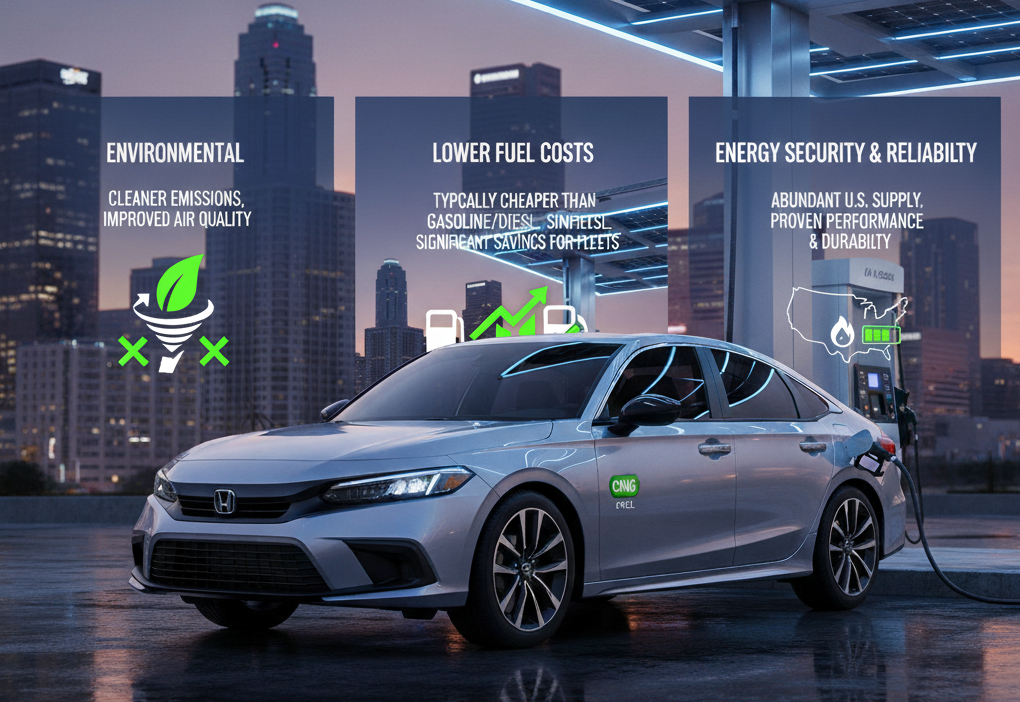Natural gas vehicles (NGVs) have steadily gained attention in the transportation sector as a cleaner, safer, and more cost-effective alternative to conventional gasoline and diesel vehicles. With rising concerns over environmental pollution, fuel costs, and energy security, NGVs are becoming a practical solution for both individual consumers and large fleets. Currently, more than 120,000 natural gas vehicles operate in the United States and over 14 million are on roads worldwide, proving that this technology is not only viable but also expanding at a significant pace.
In this article, we’ll explore the availability of natural gas vehicles, their benefits, and why the future looks promising for this fuel-efficient technology.
Availability of Natural Gas Vehicles
One of the biggest drivers of NGV growth is the increasing availability of vehicles across categories—from passenger sedans to heavy-duty trucks. More than 30 U.S. manufacturers currently produce around 100 models of natural gas-powered vehicles, giving buyers diverse options.
- Honda Civic Natural Gas Sedan model stands out as one of the first mass-produced passenger NGVs. With a 1.8L 4-cylinder engine and an 8-gallon gasoline gallon equivalent (GGE) tank, the sedan offers a range of 225–250 miles. Designed for reliability and practicality, it has been widely used in fleet applications such as sales representatives, medical couriers, parking enforcement, and non-pursuit police services.
- GM CNG Express: General Motors has developed dedicated CNG vans, such as the Express and Savana cargo vans, powered by the LC8 6.0L V8 Vortec engine. With hardened valve components and multiple tank configurations, these vans serve commercial needs where durability and consistent fueling are crucial.
- Chrysler Ram 2500 CNG: This bi-fuel pickup truck integrates both gasoline and compressed natural gas systems. With an 18.2 GGE CNG capacity providing around 255 miles of range, complemented by an additional gasoline tank, the Chrysler Ram 2500 CNG offers a combined driving range of nearly 370 miles. It’s a versatile choice for businesses that require long-distance hauling with dependable fueling flexibility.
These vehicles, alongside options from other manufacturers, prove that natural gas vehicles are no longer niche. They are being embraced by both commercial fleets and individual consumers, particularly in regions where fueling infrastructure is readily available.
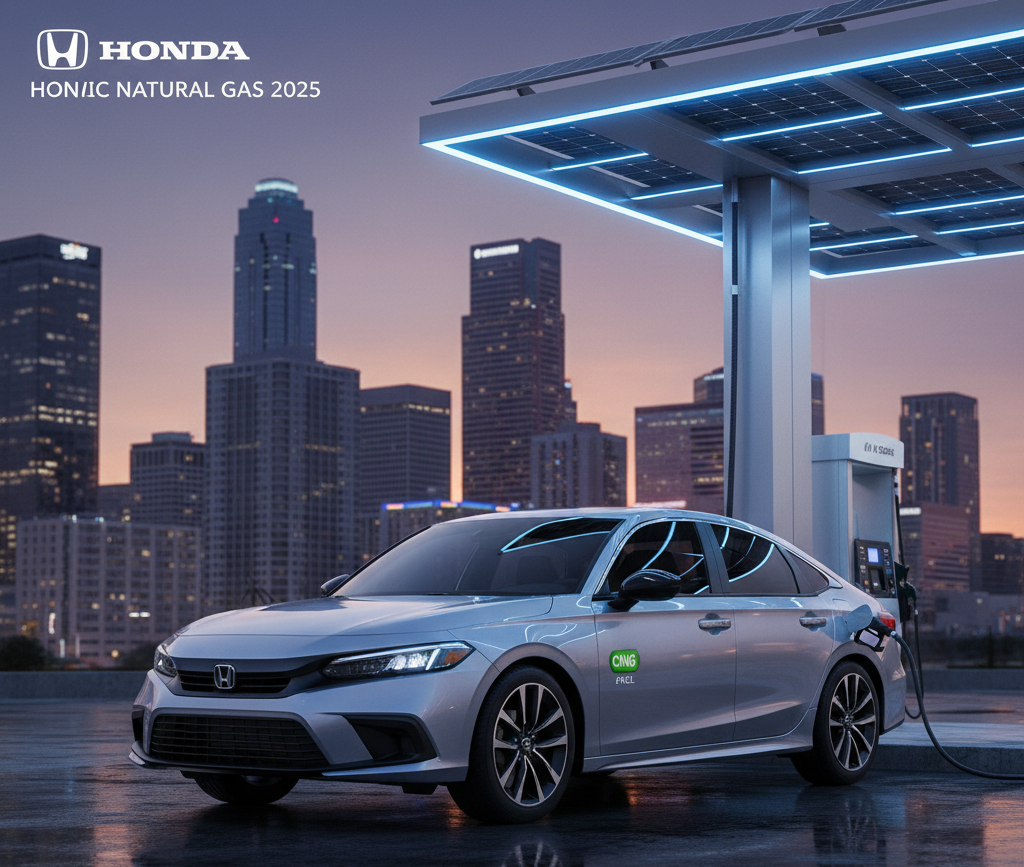
Benefits of Natural Gas Vehicles
The rising demand for NGVs is fueled by several compelling benefits:
1. Environmental Advantages
Natural gas burns cleaner than gasoline or diesel, producing fewer carbon dioxide emissions and significantly reducing nitrogen oxides and particulate matter. For cities struggling with air quality issues, NGVs provide a path toward cleaner urban transportation.
2. Lower Fuel Costs
Natural gas is typically cheaper than gasoline and diesel. For fleet operators managing dozens or even hundreds of vehicles, these savings translate into substantial operational cost reductions.
3. Domestic Energy Security
Unlike petroleum, which is often imported, natural gas is abundant in the U.S. This enhances energy independence while creating local jobs tied to gas extraction, distribution, and vehicle conversion industries.
4. Proven Reliability
Modern NGVs are designed with engines and tanks that meet stringent safety and durability standards. Vehicles like the American Honda Civic Natural Gas Sedan and GM CNG Express prove that NGVs can deliver the same performance and reliability as their conventional counterparts.

CNG Fueling Options
For NGVs to thrive, fueling infrastructure is essential. Thankfully, compressed natural gas (CNG) fueling options are becoming more widespread and accessible.
- Fast-Fill Stations: These operate much like traditional gas stations, where vehicles are fueled quickly and efficiently within minutes. They are vital for public access and are especially useful for fleets that need rapid refueling turnaround times.
- Time-Fill Stations: Here, CNG is dispensed slowly over several hours. This option is ideal for fleets that return to a central lot overnight, such as buses or delivery vans, where vehicles can be filled while idle.
- Combo-Fill Stations: A hybrid solution that combines both fast-fill and time-fill options, offering flexibility for fleets that require a mix of quick fueling and overnight refueling.
The expansion of these fueling systems is making NGVs more practical for daily use. Fleets benefit greatly from time-fill stations, while consumers and public fleets rely heavily on the fast-fill option.
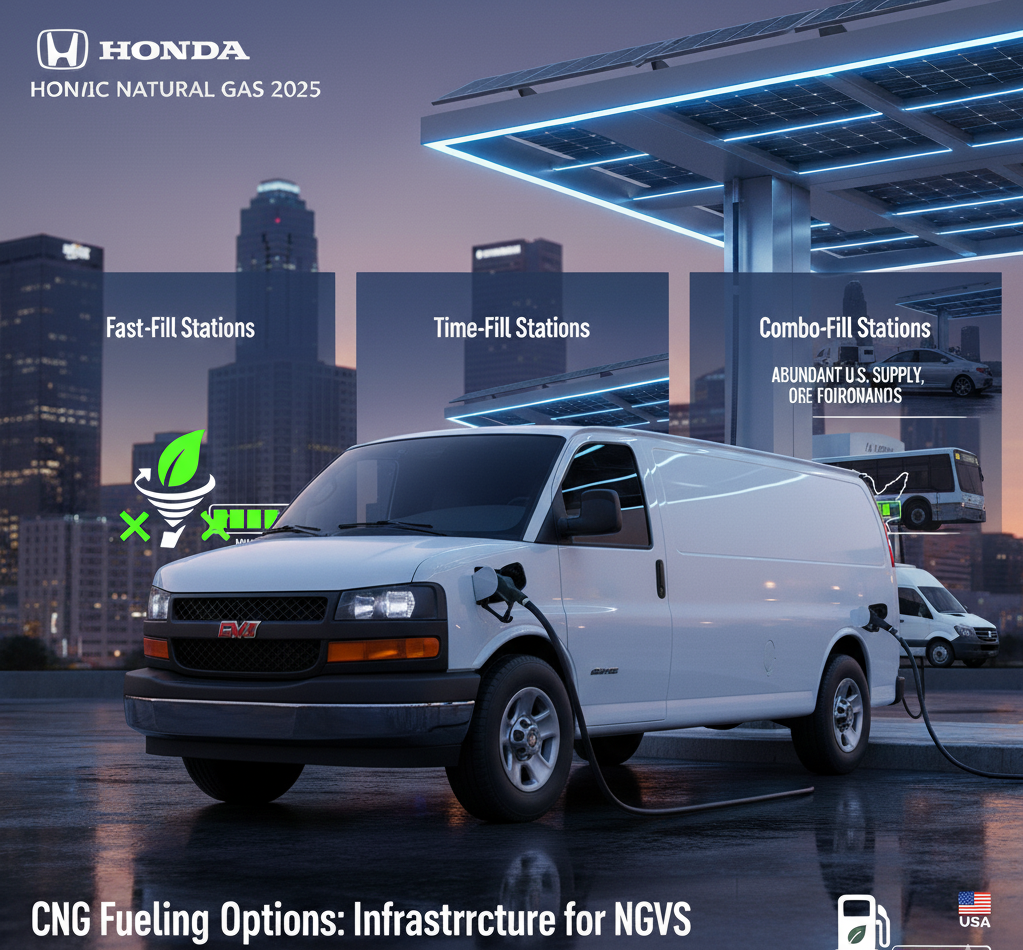
Retrofitting Gasoline and Diesel Vehicles
Beyond purchasing OEM-produced NGVs, many businesses and individuals are choosing retrofitting gasoline and diesel vehicles to run on natural gas. Retrofit kits are available for a wide range of popular vehicles, including those from GM, Ford, Dodge, and Isuzu. These systems allow existing vehicles to be converted into bi-fuel or dedicated natural gas vehicles, extending the life of fleets while reducing operating costs.
This option is particularly attractive to companies that cannot afford to replace their entire fleet with new NGVs but still want to transition toward cleaner and more affordable fuels. Retrofitting has become an important bridge in the overall adoption of natural gas vehicles.
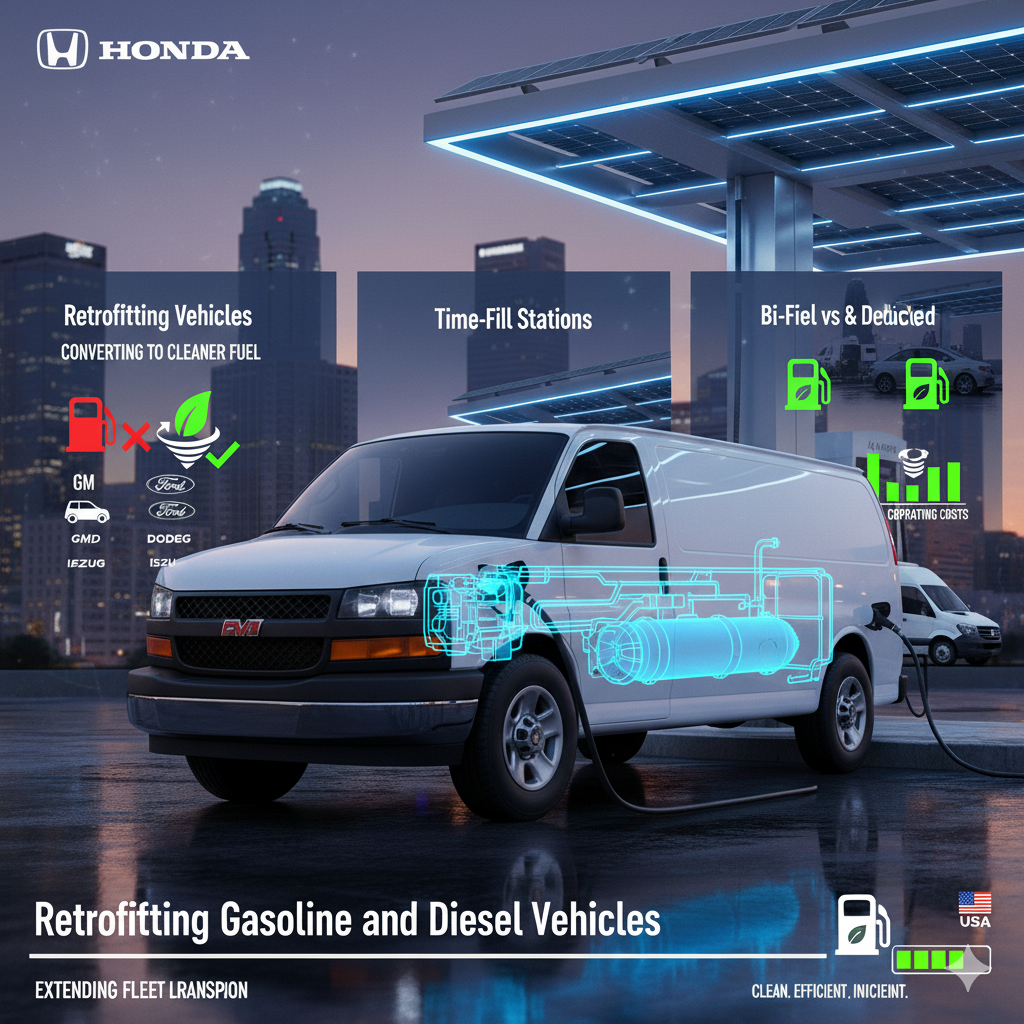
Natural Gas Vehicle Safety
Safety remains one of the most critical concerns for any alternative fuel system. Fortunately, natural gas vehicle safety standards are among the strictest in the industry.
- Tank Strength: CNG tanks are constructed with much thicker walls compared to gasoline or diesel tanks. They are designed to withstand high pressures and are rigorously tested against extreme conditions, including crash tests, fire exposure, and overfilling.
- Fuel Properties: Natural gas is lighter than air, meaning that in case of a leak, it disperses quickly rather than pooling on the ground like gasoline. Its limited flammability range (only igniting between 5% and 15% concentrations in air) also reduces the risk of accidental ignition.
- Regulations and Inspections: Tanks are built for lifespans of 15 to 25 years and must undergo inspections every three years or 36,000 miles to ensure continued safety.
When combined with adherence to industry standards, these safety measures make NGVs as safe—if not safer—than conventional vehicles.
Future Growth of Natural Gas Vehicles
The market for NGVs is projected to grow by 25% annually, driven by supportive policies, infrastructure expansion, and consumer demand for cleaner transportation solutions. Several factors are expected to fuel this growth:
- Government Incentives: Tax credits and subsidies encourage both manufacturers and buyers to invest in NGVs.
- Infrastructure Development: As CNG fueling options expand, adoption becomes more practical for both consumers and businesses.
- Corporate Sustainability Goals: Many companies are looking to reduce their carbon footprints, making NGVs an appealing choice for fleet operations.
- Global Adoption: With over 14 million natural gas vehicles worldwide, the U.S. is part of a much larger movement toward natural gas as a mainstream fuel.
Given these factors, NGVs are not only a solution for today but also a long-term contributor to sustainable and cost-effective transportation.
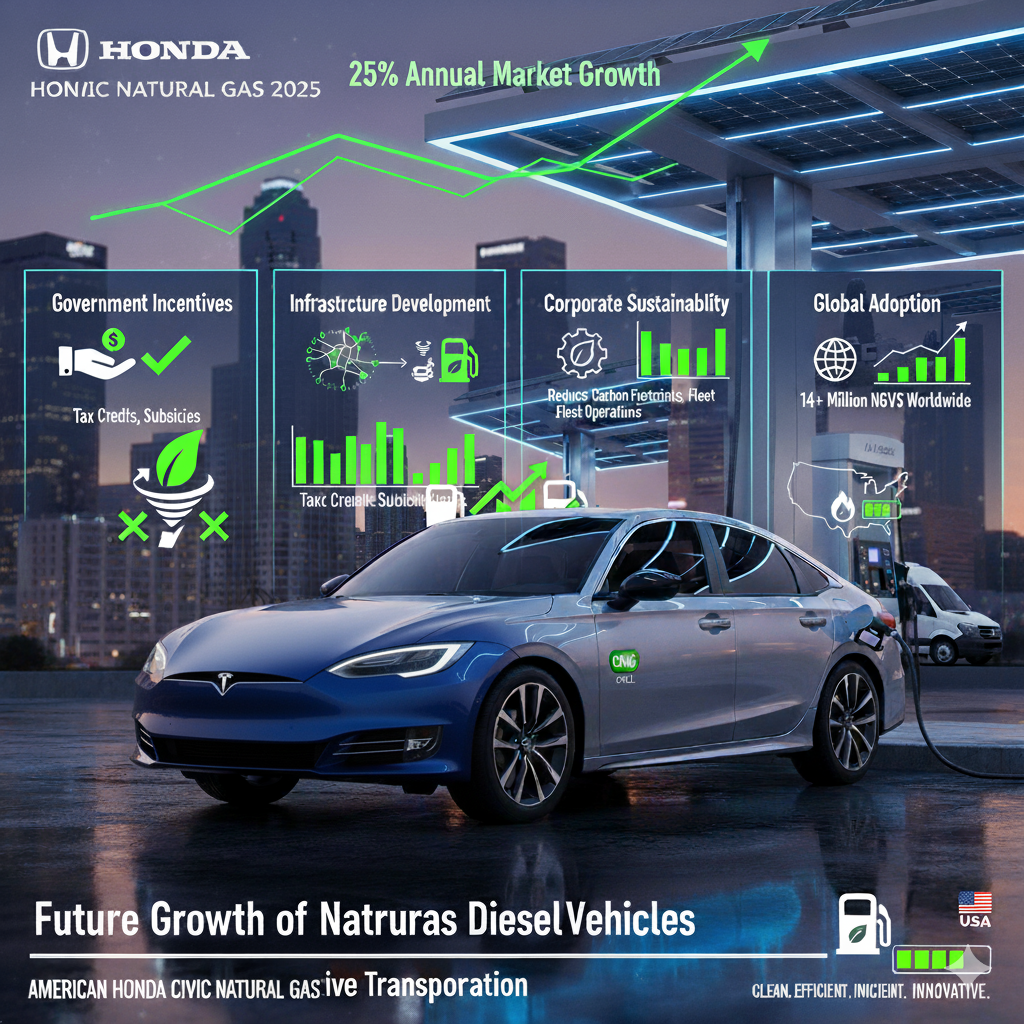
Conclusion
Natural gas vehicles represent a powerful intersection of environmental responsibility, economic savings, and energy independence. From consumer-friendly sedans like the American Honda Civic Natural Gas Sedan, to commercial workhorses such as the GM CNG Express and Chrysler Ram 2500 CNG, NGVs offer practical solutions for diverse transportation needs. Supported by growing CNG fueling options, the availability of fast-fill and time-fill stations, and advancements in retrofitting gasoline and diesel vehicles, the future of natural gas mobility looks bright. Backed by strict natural gas vehicle safety standards, this technology is paving the way for a cleaner, more efficient transportation system.
As adoption continues to rise and infrastructure expands, it’s clear that NGVs are more than just an alternative—they are a cornerstone of the future of mobility. For more insights into the latest automotive trends and technologies, stay connected with nexgenwheels.


